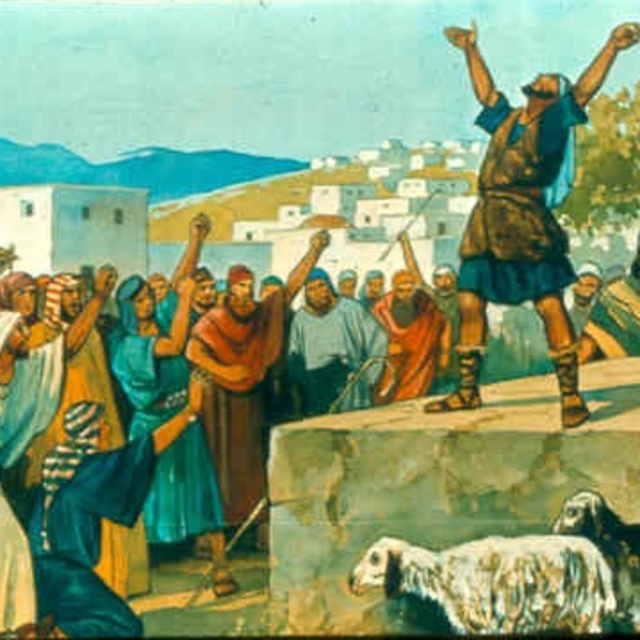Introduction
The long-lived Jonah, Job, Judith and Jeremiah were all contemporaneous I shall be arguing here.
Jonah's long life (120-130 years by tradition) spanned from king Jeroboam II of Israel (2 Kings 14:25) to the early reign of Esarhaddon king of Assyria.
Job would have been born somewhat later than Jonah, probably closer to the reign of king Hoshea the last ruler of the kingdom of Israel. His long life of at least 140 years (Job 42:16) would have overlapped with much of the life of Jonah, and would have taken Job down to the Chaldean period (Job 1:17).
Judith was a young and beautiful woman late in the reign of Esarhaddon's predecessor, Sennacherib. Her long life of 105 years (Judith 16:23) would have taken her, too, into the Chaldean era.
Jeremiah was presumably later than these three, he having begun his ministry in the 13th year of Josiah, king of Judah (Jeremiah 1:2). However, according to what I am going to be suggesting (see An important note ... below), Jeremiah was actually a young man (na'ar) at the same time as Judith was a young woman, meaning that Jeremiah and Judith would have been born near to the same time.
1. Jonah
Jonah I have multi-identified as the long-lived Hosea = Isaiah, and also as the Simeonite "Uzziah" of the Book of Judith:De-coding Jonah
https://www.academia.edu/43239120/De-coding_Jonah
who, collectively, spanned from Jeroboam II (Hosea 1:1) to at least the reign of king Hezekiah of Judah (Isaiah 1:1).As the Uzziah of the Book of Judith, Jonah well knew Judith, being a fellow Simeonite, probably of the same family, and living in the same northern city, "Bethulia" (= Bethel = Shechem).
Read the Book of Judith for her strong criticism of the city elders, including Uzziah (8:11-20), and for Uzziah's praise of Judith (13:18-20). Later we shall read that Jonah (as Isaiah) also made some glowing references to Jeremiah.
An important note on the above "De-coding Jonah" article:
This article is absolutely crucial for an understanding of the chronology of Jonah, and how the prophet Jeremiah could have been contemporaneous with both Isaiah (= Jonah) and Judith. One of this article's important conclusions is that the era of Hezekiah, the era of Josiah, of Judah, was the same era, that:
Hezekiah = Josiah;
Shebna = Shaphan;
Joah = Joah;
Hilkiah = Hilkiah;
and so on.Esarhaddon now becomes identified with Nebuchednezzar 'the Great'. See e.g. my article:
Esarhaddon a tolerable fit for King Nebuchednezzar
https://www.academia.edu/38017900/Esarhaddon_a_tolerable_fit_for_King_Nebuchednezzar
And, in 3. and 4., I shall say who, respectively, Judith is in a Josian context, and who Jeremiah is in a Hezekian context.
2. Job
Job I have identified as Tobias, the son of Tobit. See e.g. my article:Job's Life and Times
https://www.academia.edu/3787850/Jobs_Life_and_Times
a biblical character who belongs to the neo-Assyrian era of "Shalmaneser", of "Sennacherib" and of "Esarhaddon".Job, therefore, was not some very ancient patriarch of the approximate time of Abraham, as is often thought, nor an Ice Age person at the time of the dinosaurs ("Behemoth" and "Leviathan"), as is also sometimes suggested.
Living as he did in Nineveh, then later in "Uz" (= Transjordanian Hauran), Job we would not expect to be too much involved in the mainstream affairs of Jerusalem, as were, say, Isaiah and Jeremiah. However, Job's father, Tobit, does refer to "Jonah" (Tobit 14:8), and also to Jonah's father, "Amos" (Tobit 2:6).
In a version of Tobit, "Jonah" is replaced by "Nahum", whom I have tentatively identified as Job himself living at Nineveh. Nahum's "Elkosh" (Nahum 1:1) being, perhaps, Ali Kosh near Nineveh. See my article:
Prophet Nahum as Tobias-Job Comforted
https://www.academia.edu/8729042/Prophet_Nahum_as_Tobias-Job_Comforted
3. Judith
She, the Simeonite heroine, was, as I have argued in various articles, the Divinely-inspired catalyst for the defeat of Sennacherib's Assyrian army of 185,000. See e.g. my:"Nadin" (Nadab) of Tobit is the "Holofernes" of Judith
https://www.academia.edu/36576110/_Nadin_Nadab_of_Tobit_is_the_Holofernes_of_Judith
this possibly being the most courageous act of any Old Testament woman, pointing to the Virgin Mary's crushing of the Serpent's head.In the Josian era, Judith is the famous biblical interpreter of the Law, Huldah. See e.g. my article:
Huldah the Great
https://www.academia.edu/43361211/Huldah_the_Great
Judith's wealthy husband, Manasseh, must then be Huldah's husband, Shallum, whom I have tentatively identified as the prophet Zephaniah, a Kohathite Levite, but geographically a "Simeonite" (as some legends indeed designate him):Prophet Husband of Judith-Huldah
https://www.academia.edu/43420056/Prophet_Husband_of_Judith-Huldah
4. Jeremiah
Most obviously now, Jeremiah, son of Hilkiah (Josian context) must be identified as Eliakim, son of Hilkiah (Hezekian context), a high priest. See e.g. my article:Jeremiah as Baruch 1:7's 'Jehoiakim son of Hilkiah'
https://www.academia.edu/43301105/Jeremiah_as_Baruch_1_7s_Jehoiakim_son_of_Hilkiah
Jeremiah clearly refers to the Jonah incident (51:34): "Nebuchadrezzar the king of Babylon has devoured me, he has crushed me, he has made me an empty vessel, he has swallowed me up like a dragon [whale], he has filled his belly with my delicates, he has cast me out". "Nebuchadrezzar" [Nebuchednezzar] (= Esarhaddon) being my "king of Nineveh" of the Book of Jonah (3:6).Jonah (as Isaiah) will refer to Jeremiah in his Oracle (22:20-25), Jeremiah also being the most fitting candidate (according to some commentators) for Isaiah's "Suffering Servant", pointing the way to Jesus Christ, the supreme Suffering Servant.

